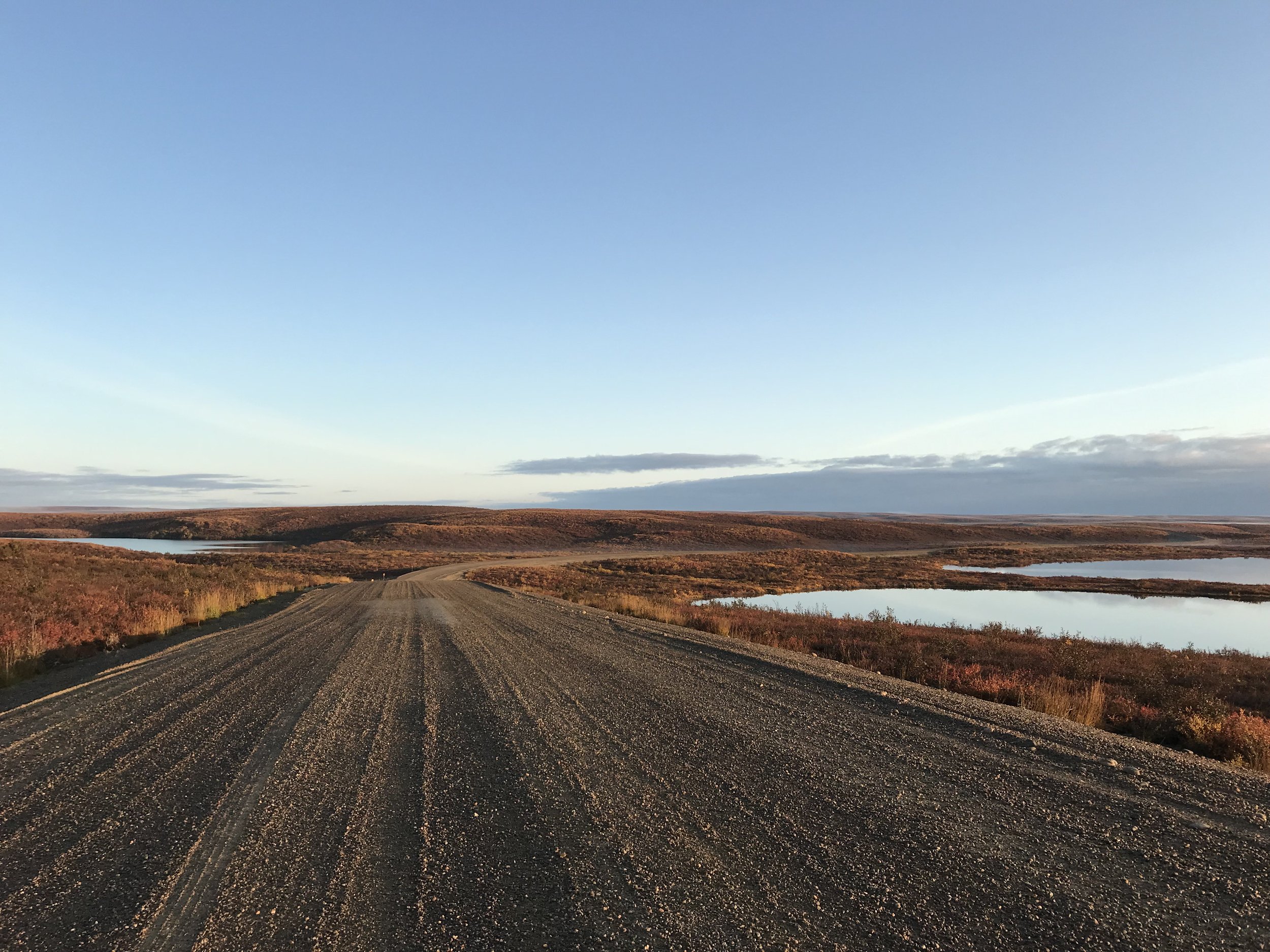
Jay’s Research
Research Interest
Investigation of permafrost mitigation techniques using numerical modelling
Collaboration with Government of NWT on snow manipulation study along the Inuvik-Tuktoyaktuk Highway to develop ground temperature models
Research Example
Two trumpet curves shown in graph made from two models simulating ground temperatures from historical weather data from Inuvik from 2003 to 2021 from the final year of the model
First model was developed using provided snow data, whereas second model was developed with snow cover having been manipulated each winter
From the graphs the snow manipulated model shows a colder temperature profile and a active later depth 0.15 m shallower
Jay’s Research
Seasonal snow cover along linear infrastructure in permafrost regions greatly affect ground temperatures. Snow acts as an insulator and impedes the flow of heat from the ground to the air in the winter months. Currently, along the Inuvik-Tuktoyaktuk Highway a snow manipulation project is being conducted whereby at certain locations the ground snow cover is being manipulated to reduce the snow depth and increase the density. This project seeks to develop numerical models calibrated to the field site data to design of an effective snow management plan for along linear infrastructure that will facilitate the preservation of underlying permafrost.
One example of the work being done is shown below in the graph where two trumpet curves were produced from two models simulating ground temperatures from historical weather data from Inuvik from 2003 to 2021. The trumpet curves show temperatures from the final year of the models where one model ran as normal and the other ran with a simulation of snow manipulation being applied three times over the winter months. The trumpet curve with snow manipulation shows a colder profile and has a active layer depth 0.15 m shallower than the normal mode, thus showing the utility of snow manipulation on mitigation permafrost degradation.
Jay’s Research
-
Project Overview
Seasonal snow cover along linear infrastructure in permafrost regions greatly affect ground temperatures. Snow acts as an insulator and impedes the flow of heat from the ground to the air in the winter months. Currently, along the Inuvik-Tuktoyaktuk Highway a snow manipulation project is being conducted whereby at certain locations the ground snow cover is being manipulated to reduce the snow depth and increase the density. This project seeks to develop numerical models calibrated to the field site data to design of an effective snow management plan for along linear infrastructure that will facilitate the preservation of underlying permafrost.

-
Research Example
One example of the work being done is shown below in the graph where two trumpet curves were produced from two models simulating ground temperatures from historical weather data from Inuvik from 2003 to 2021. The trumpet curves show temperatures from the final year of the models where one model ran as normal and the other ran with a simulation of snow manipulation being applied three times over the winter months. The trumpet curve with snow manipulation shows a colder profile and has a active layer depth 0.15 m shallower than the normal mode, thus showing the utility of snow manipulation on mitigation permafrost degradation.

Jay’s research
Seasonal snow cover along linear infrastructure in permafrost regions greatly affect ground temperatures. Snow acts as an insulator and impedes the flow of heat from the ground to the air in the winter months. Currently, along the Inuvik-Tuktoyaktuk Highway a snow manipulation project is being conducted whereby at certain locations the ground snow cover is being manipulated to reduce the snow depth and increase the density. This project seeks to develop numerical models calibrated to the field site data to design of an effective snow management plan for along linear infrastructure that will facilitate the preservation of underlying permafrost.
One example of the work being done is shown below in the graph where two trumpet curves were produced from two models simulating ground temperatures from historical weather data from Inuvik from 2003 to 2021. The trumpet curves show temperatures from the final year of the models where one model ran as normal and the other ran with a simulation of snow manipulation being applied three times over the winter months. The trumpet curve with snow manipulation shows a colder profile and has a active layer depth 0.15 m shallower than the normal mode, thus showing the utility of snow manipulation on mitigation permafrost degradation.
Research
Welcome to our research page. Here you’ll find lorem ipsum dolor sit amet, consectetur adipiscing elit. Nulla ornare nisl denim, tristique feugiat relit interdum et.
Projects
Our Sites
Location One
123 Demo Street
New York, NY 12345
Location Two
123 Demo Street
New York, NY 12345










